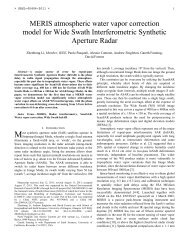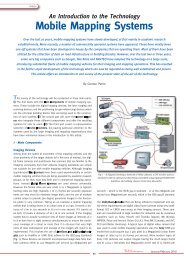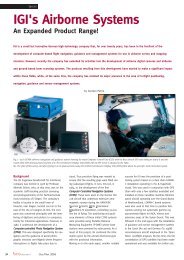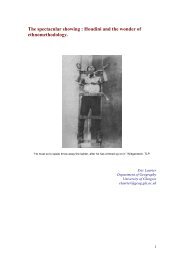Café Ethnography : the uses of tables and chairs
Café Ethnography : the uses of tables and chairs
Café Ethnography : the uses of tables and chairs
You also want an ePaper? Increase the reach of your titles
YUMPU automatically turns print PDFs into web optimized ePapers that Google loves.
<strong>Café</strong> <strong>Ethnography</strong>:<br />
background noise) as part <strong>of</strong> our prototype testing o<strong>the</strong>r orderly features <strong>of</strong> <strong>the</strong> setting<br />
were brought from <strong>the</strong> background to <strong>the</strong> foreground.<br />
All <strong>of</strong> <strong>the</strong> above has been related to <strong>the</strong> question which had arisen for us as part <strong>of</strong> our<br />
collaborative work with designers was whe<strong>the</strong>r 'informal public places' (like cafés <strong>and</strong><br />
bars) were less codified rule-bound <strong>and</strong> institutionalised than workplaces (Whyte<br />
1999). 7 Whe<strong>the</strong>r, although characterisable as places where people have "greater<br />
freedom in interpretation <strong>of</strong> <strong>the</strong>ir roles' requirements" (Misztal 2000) (page8), <strong>the</strong>y<br />
actually were places where people reflexively played with <strong>the</strong>ir roles. One thing we<br />
were certain <strong>of</strong> was that <strong>the</strong> best place to try <strong>and</strong> learn about informality was a place<br />
like <strong>the</strong> Flaming Cup, which we had come upon in our suburb as a place <strong>of</strong> that kind.<br />
So we knew where to go without yet interrogating how we had come to have such an<br />
immediate sense <strong>of</strong> <strong>the</strong> Flaming Cup as an informal place. 8<br />
Ultimately <strong>the</strong> interactions which we considered significant to <strong>the</strong> informal settings<br />
that we were considering were selected on <strong>the</strong> basis <strong>of</strong> four elements (which were<br />
based on Wieder 1974, p73) :<br />
1. The interactions were observable as regular, repeated patterns <strong>of</strong> interaction. We<br />
were able to see <strong>the</strong> patterns day in, day out in <strong>the</strong> places we were investigating<br />
<strong>and</strong> those patterns persisted even as <strong>the</strong> staff <strong>and</strong> customers in those places<br />
changed.<br />
2. The orderly nature <strong>of</strong> informal interaction, although <strong>of</strong> some concern to <strong>the</strong><br />
customers <strong>of</strong> cafes <strong>and</strong> bars, were <strong>of</strong> high pr<strong>of</strong>essional relevance to <strong>the</strong> staff <strong>of</strong> <strong>the</strong><br />
cafes <strong>and</strong> bars. Producing 'informality' or 'intimacy' or 'a sense <strong>of</strong> community' as<br />
well as clean tabletops, fresh cups <strong>of</strong> c<strong>of</strong>fee or pint glasses or real ale were <strong>the</strong><br />
requirements <strong>of</strong> <strong>the</strong> staff <strong>of</strong> <strong>the</strong>se venues.<br />
3. The patterns <strong>of</strong> informal interaction were <strong>of</strong> relevance to our research in ano<strong>the</strong>r<br />
fundamental way, since drawing on both actor-network <strong>the</strong>ory <strong>and</strong><br />
ethnomethodologically informed ethnography, we have set aside a priori<br />
explanations (such as sociological <strong>the</strong>ories, political economic structures <strong>and</strong> so<br />
forth) in order see informality as it is accomplished on each occasion by <strong>the</strong><br />
members/actants in our sites <strong>of</strong> interest. The sense, <strong>the</strong>n, <strong>of</strong> what is happening as<br />
informal interaction is through reference to what any competent customer <strong>of</strong> those<br />
places knows <strong>of</strong> informality, be <strong>the</strong>y a cultural geographer, designer, police<br />
<strong>of</strong>ficer or delivery driver.<br />
4. From <strong>the</strong> numerous interactions occurring in <strong>the</strong> settings, we have selected those<br />
revolving around <strong>and</strong> constitutive <strong>of</strong> <strong>the</strong> 'table' in those places. Again reflecting<br />
<strong>the</strong> premises <strong>of</strong> actor-network <strong>the</strong>ory, <strong>the</strong> table is treated as a relational entity<br />
which is multiple <strong>and</strong> mobile whose stability <strong>and</strong> organisational features are<br />
accomplished in use.<br />
7 Already we find a proliferation <strong>of</strong> categories <strong>of</strong> places<br />
8 We have examined elsewhere some <strong>of</strong> <strong>the</strong> ways in which people in a city find <strong>the</strong> kinds <strong>of</strong> cafes <strong>and</strong><br />
bars which match <strong>the</strong>ir interests (Laurier <strong>and</strong> Whyte 2000)<br />
8
















